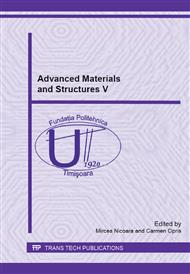[1]
C. J. Li, G. J. Yang, C. X. Li, Development of the particle interface bonding in thermal spray coatings for expanding high performance applications, Thermal Spray 2012: Proceed. from the Int. Spray Conf. and Exp. (2012) 47-57.
DOI: 10.31399/asm.cp.itsc2012p0047
Google Scholar
[2]
L. Pawlowski, The Science and Engineering of Thermal Spray Coatings, 2nd ed., John Willey & Sons Ltd, England, (2008).
Google Scholar
[3]
P Chivavibul, M. Watanabe, S. Kuroda, J. Kawakita, M. Komatsu, K. Sato, J. Kitamura, Development of WC-Co coatings deposited by warm spray process, JTST, 17 (2008) 750-756.
DOI: 10.1007/s11666-008-9271-4
Google Scholar
[4]
D. Poirier, J. G. Legoux, R. S. Lima, Engineering HVOF sprayed Cr3C2-NiCr: The effect of particle morphology and spraying parameters on the microstructure, properties and high temperature wear performance, Thermal Spray 2012: Proceed. from the Int. Spray Conf. and Exp. (2012).
DOI: 10.1007/s11666-012-9833-3
Google Scholar
[5]
G. R. Heath, A. Tremblay, P. Anderson, A. A. Morquecho, Innovative coating development using a new, user friendly HVOF and metal based powders, Thermal Spray 2012: Proceed. from the Int. Spray Conf. and Exp. (2012) 98-103.
DOI: 10.31399/asm.cp.itsc2012p0098
Google Scholar
[6]
J. M. Guilemany, N. Cinca, J. Fernandez, S. Sampath, Erosion, abrasive and friction wear behavior of iron aluminide coatings sprayed by HVOF, J. Therm. Spray Technol 17 (2008) 762-773.
DOI: 10.1007/s11666-008-9252-7
Google Scholar
[7]
I. Hulka, V. A. Serban, K. Niemi, P. Vuoristo, J. Wolf, Comparison of Structure and Wear Properties of fine structured WC-CoCr coatings deposited by HVOF and HVAF spraying processes, Solid State Phen., 188 (2012) 422-427.
DOI: 10.4028/www.scientific.net/ssp.188.422
Google Scholar
[8]
B. Sun, H. Fukanuma, Deposition of WC-Co coatings by a novel high pressure HVOF, Thermal pray 2012: Proceed. from the Int. Spray Conf. and Exp. (2012) 859-863.
DOI: 10.1007/s11666-012-9852-0
Google Scholar
[9]
I. Hulka, V. A. Şerban, I. Secoșan, P. Vuoristo, K. Niemi, Wear properties of CrC–37WC 18M coatings deposited by HVOF and HVAF spraying processes, Surf. and Coat. Technol., 210 (2012) 15-20.
DOI: 10.1016/j.surfcoat.2012.07.077
Google Scholar


